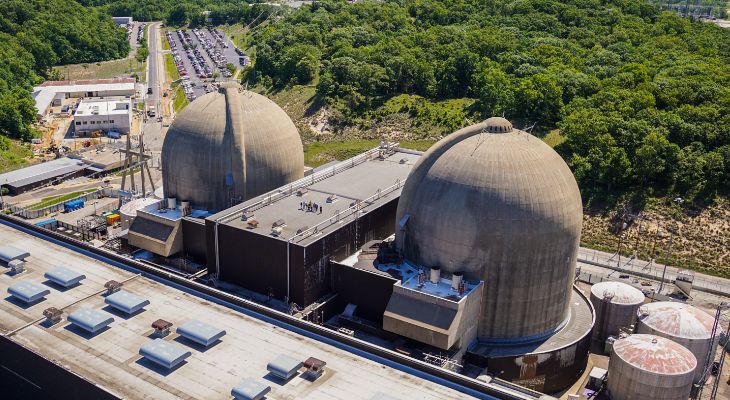BRIDGMAN, Mich., – Indiana Michigan Power’s Cook Nuclear Plant Unit 1 will begin its thirtieth refueling outage Saturday, April 2, at 3:00 a.m. Power on Unit 1 was reduced on Wednesday, March 30, to allow for equipment testing before the outage begins. The unit will have operated for 12,572 hours during its last cycle at a capacity factor of 104 percent, generating 13,757,462 megawatt-hours of electricity.

Cook Unit 2 remains at 100 percent. Power to customers is not expected to be disrupted by the planned Unit 1 outage.
In addition to refueling the reactor and performing regular maintenance and testing work, the outage will also include an inspection of the high pressure turbine, inspection and maintenance of the unit’s steam generators, an upgrade to a safety-related control system, seal replacement on all three of the unit’s main condensers, and a digital control upgrade to the moisture separator reheater system.
Over 1200 contracted workers will supplement the regular 1,000-person plant staff leading up to and during the outage. Nearly 11,000 maintenance, inspection and equipment modification job activities totaling 240,000 work-hours are scheduled for two daily 12-hour work shifts.
Cook Nuclear Plant is owned and operated by Indiana Michigan Power, an AEP company, headquartered in Fort Wayne, IN. At full capacity, the 1,084-net MW Unit 1 and 1,194-net MW Unit 2 combined produce enough electricity for more than one and one half million average homes. Indiana Michigan Power and its approximately 2,100 employees serve more than 599,000 customers. More than two-thirds of its energy delivered in 2019 was emission-free. I&M has at its availability various sources of generation including 2,278 MW of nuclear generation in Michigan, 450 MW of purchased wind generation from Indiana, more than 22 MW of hydro generation in both states and approximately 15 MW of large-scale solar generation in both states. The company’s generation portfolio also includes 2,620 MW of coal-fueled generation in Indiana.
For more information visit www.indianamichiganpower.com or www.cookinfo.com.
MEDIA CONTACT:
Bill Downey
Communications Manager
Cook Nuclear Plant
Work – 269.466.2955 Cell – 269.405.0184